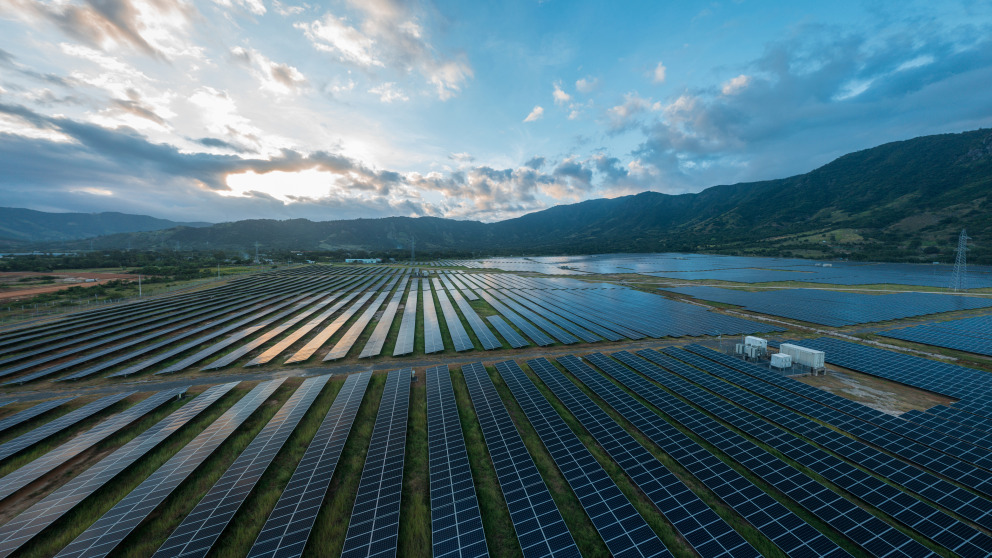Challenges and Opportunities for the Southeast Asian Solar Market: Lessons From Vietnam and Malaysia
07.03.2023
Both Vietnam and Malaysia have made significant strides in recent years to scale their renewable capacity, and solar has played a cardinal role in both contexts. A new policy brief by RIFS affiliate scholar Emily Burlinghaus takes stock of developments in the two countries and draws lessons for energy transitions in Southeast Asia.

Southeast Asia is one of the fastest growing regions worldwide by both gross domestic product and electricity demand. Solar photovoltaics (PV) will play an increasingly important role as the region strives to decarbonize and meet rising energy demand. High solar resource potential, a significant cost drop for installed PV in the region (about 45 percent between 2012 and 2016), and favourable policies have allowed Southeast Asia to surpass other regions in solar capacity growth, from approximately 23 GW in 2020 a projected 241 GW by 2030. The International Renewable Energy Agency (IRENA) deems solar “the flagship resource for ASEAN’s decarbonization”.
Two countries in particular–Vietnam and Malaysia–have led the way in solar offtake in recent years and installed more new PV capacity than others in the region in 2020. They are the world’s second and third largest manufacturers of solar PV modules and have significantly lowered barriers to utility-scale and residential solar adoption. However, their diverging approaches to electricity markets, renewables integration, and distributed energy resources have resulted in very different outcomes for solar growth. In many respects, Malaysia’s holistic approach to solar pricing, grid modernization, and regional interconnectivity provides lessons for both Vietnam’s solar market and the broader ASEAN region.
As both countries move toward cleaner energy futures, growing penetration of variable renewable energy—especially solar PV for residential, commercial, and even industrial uses—is already posing new challenges to their respective power grids. New technologies, regulatory frameworks, and utility operation models will be essential to adapting both countries’ respective energy systems. Solutions that offer energy storage, frequency regulation, and flexibility are crucial to keeping pace with global trends. Fortunately, both Vietnam and Malaysia are in economically—and geographically—favourable positions when it comes to clean energy technology. Their existing industrial prowess, leadership in the manufacturing of solar PV, proximity to East Asian clean energy manufacturing powerhouses, and competitive export advantages position them well to lead the adoption and export of clean energy technologies, and solar PV in particular, over the long term.
The RIFS Policy Brief “Challenges and Opportunities for the Southeast Asian Solar Market: Lessons From Vietnam and Malaysia” offers three key recommendations for policymakers in the respective countries and the wider region:
-
Prioritize grid modernization
Vietnam’s decision to stall solar project approval in 2022 is a repercussion of grid undercapacity. Upgrades to transmission and distribution infrastructure, digital solutions to monitor and automate data collection, and connectivity with neighbouring grids all help mitigate this risk.
-
Implement and update solar incentives in response to market and technical realities
Competitive bidding processes, fair net energy metering (NEM) rates, and distributed generation and trading are key to building a fair, accessible, and cost-competitive solar market.
-
Promote equity and transparency in the solar market
Most power markets in Southeast Asia are vertically integrated. Malaysia is no exception, and Vietnam has only undergone partial liberalization. Power sector deregulation, complemented by competitive solar tenders, clear central-provincial alignment, consumer protection measures, and transparent quota systems can build trust and transparency in solar markets.
Publication:
Burlinghaus, E.: Challenges and Opportunities for the Southeast Asian Solar Market: Lessons From Vietnam and Malaysia, RIFS Policy Brief, March 2023, Potsdam.
DOI: 10.48481/rifs.2023.003
